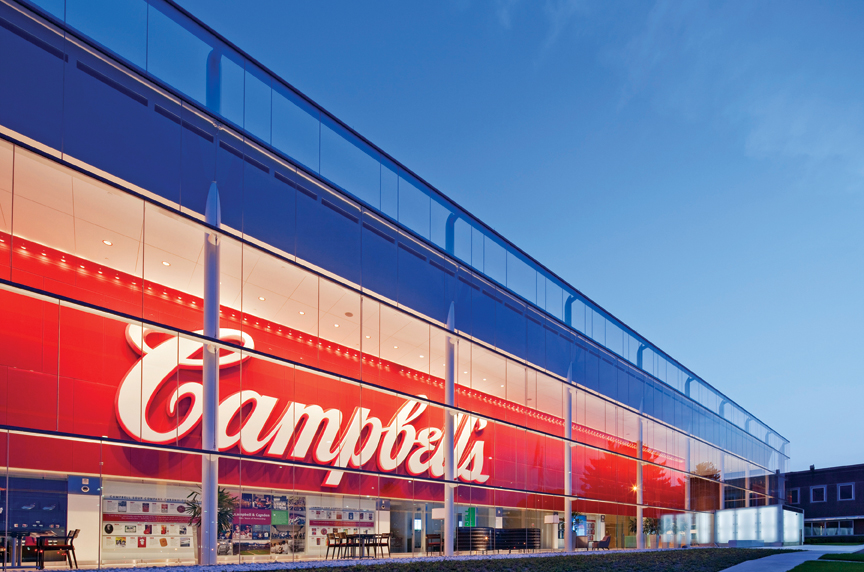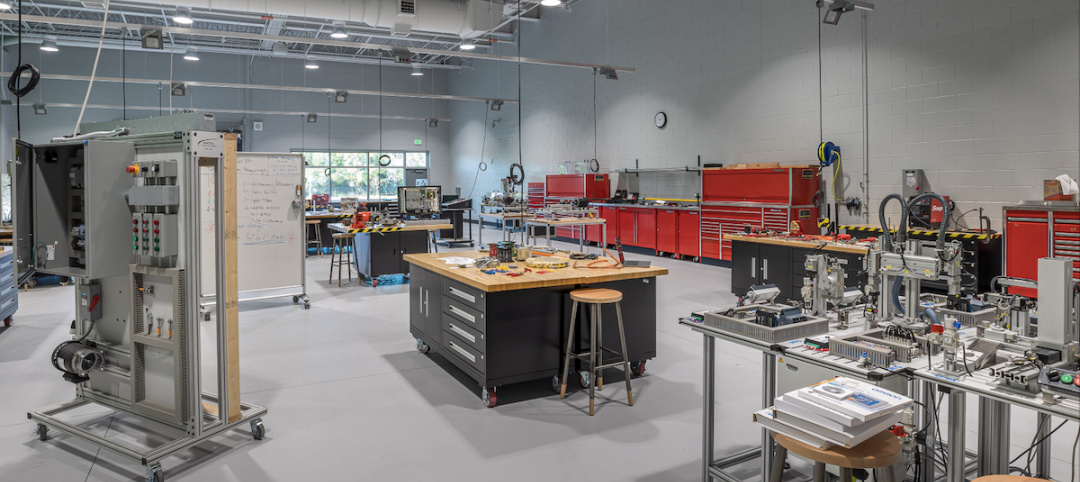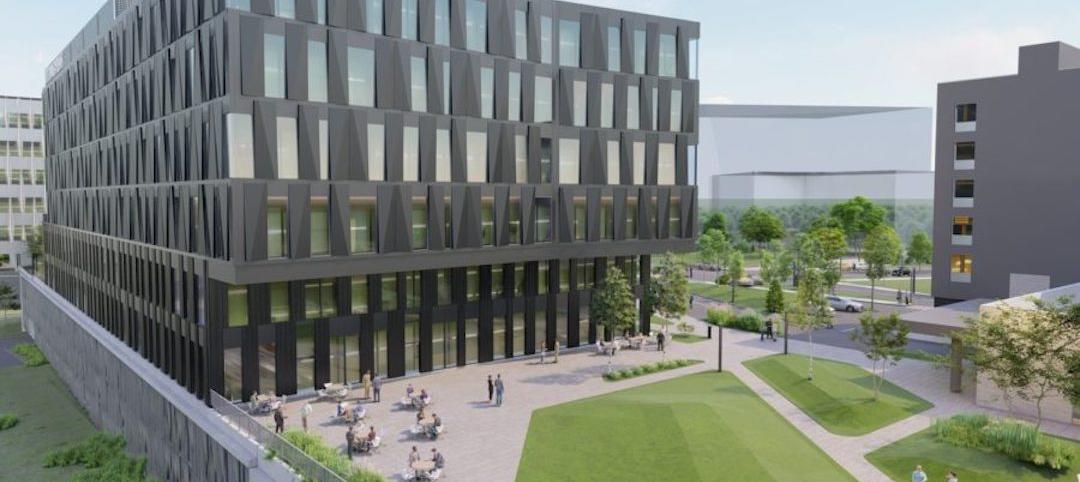It’s logical to believe that the quality of your client service sets you apart. Your firm—like all other professional services firms—sells services, and your fees are based on the time it takes to provide those services. But offering good services is just the baseline, not the end game; services are merely the instruments needed to develop, design and build great projects. To build your influence and attract more clients, it’s time to drop the emphasis on services and start to focus on outcomes.
What Are Outcomes, and How Do You Measure Them?
You can easily quantify outcomes by running the numbers; for example, how many people attended a cultural venue you designed, how many new students applied to a school, or what version of LEED certification you were able to achieve for a client.
On the other hand, qualitative results—such as user comfort or even social justice—are more difficult to measure. James Timberlake, founding partner of KieranTimberlake, a Philadelphia-based architecture firm, explains that the firm set out to make a “transformational” project when it designed the US Embassy in London. While it’s hard to quantify “transformation” or “design excellence” and much easier to measure the performance of the building’s EFTE paneled-façade, many would call the building a critical success, as it’s won multiple design awards and received wide media coverage.
The effects of a project can also be unexpected. Chris Torres, founding principal at Agency Artifact, a Los Angeles-based urban planning and landscape architecture firm, achieved a “happy accident” during his work on the Compton Hub City Masterplan (at his previous firm, Superadjacent). To increase local participation in the planning process, Torres cooperated with a local pastor to gather 1,000 residents for a public workshop after church. While Torres celebrates this input as a great result of the project, he says that “boosting public participation is not a typical metric in a service-based approach, but it is vital to reaching the outcomes our clients ultimately desire.”
While single projects can have an impact, they’re only individual pieces of a collective puzzle that can be harder and harder to solve. Already, architects like Timberlake are changing the conversation to infuse their projects with big ideas that have nothing to do with program, cost, or schedule—although those guardrails are necessary to keep projects on track. Describing the firm’s Park at Penn’s Landing project, a new public park along the Delaware River, Timberlake describes how “equity will be part of conversation about public realm,” along with goals like “scale, warmth, and broad appeal.”
However you measure a project’s end results, outcome-based thinking—and doing!—are
increasingly urgent as the industry is forced to confront new challenges at an unmatched scale (extreme heat, wildfires, rising sea levels) and complexity (pandemics, public health, homelessness). The stakes are highest for problems of local and national magnitude: anything from future-proofing cities for resilience to providing affordable housing for all.
Savvy clients are also changing the procurement process to chip away at these critical issues. Ashley Hand, director of strategic communications at Unified Government of Wyandotte County and Kansas City, Kansas, explains that “we are rethinking how [we] scope projects to make sure they are solving the right problem,” with private and public sectors collaborating. Hand is redefining project scopes and contractual relationships to measure the human experience (“how do you measure ‘transportation happiness?’” she asks rhetorically) as well as the empirical facts.
Shifting Your Mindset
Recalibrating your thinking towards outcomes means adopting a different kind of mindset that leaps beyond delivering project features (size, program components, materials) to producing results—such as increasing your clients’ ROI, reducing their energy use, or improving the tenant experience. “We’re not just delivering the next building to a client,” explains Matt Noblett, partner in Behnisch Architekten’s Boston office, an international architecture firm that also has offices in Stuttgart and Munich. “We’re figuring out how it fits into a bigger undertaking, such as sustainability and performance.”
According to Russell Fortmeyer, associate principal in the Los Angeles office of international engineering firm Arup, many mechanical engineers talk about how they’re going to get permits, but they don’t talk about how to help clients with their businesses. “We test options that help clients understand their energy and operational costs, so we can consistently deliver an outcomes-based approach to repeat clients,” he says.
By foregrounding great results (rather than, say, fees), firms transcend the transactional nature of the business relationship, shifting the conversation from spreadsheets to strategies. “Services are a race to the bottom; you become a commodity,” quips Torres. But Torres also recognizes that it’s easy to fall into the services trap. He states that “it’s not always a linear process to get to outcomes. It’s more challenging and it also requires more time to see results.”
Additionally, talking about big-picture solutions can help firms bridge the educational divide that often separates professionals from their clients, connecting AEC experts with owners and users in a more positive way. Architect Alan Metcalfe, principal and founder of Metcalfe, an experience design firm in Philadelphia, explains that “we are selling experiences, not a roof that doesn’t leak. Our clients don’t necessarily know what our services mean. But when we talk about warm, welcoming places—that’s the kind of language that resonates with them.”
In most cases, though, it takes a like-minded client to join you: Either you have the client at “hello” or you don’t. Noblett says that it’s “ideal to find a client matchup that is appropriate right at beginning.” Even though Behnisch’s award-winning projects for Portland State University and the University of Baltimore were public procurement projects, they “were driven by Presidents who were strong leaders with a vision. They viewed their projects as their personal legacies and also wanted to make a fundamental impact on the quality of life for students and faculty,” according to Noblett.
Resetting Your Vision
Some firms have always concentrated on the end product, while other firms have used the pandemic as an opportunity to reset their practices, beginning with their marketing strategies. Over the past couple of years, global cost consulting firm Rider Levett Bucknall (RLB) transitioned its strategy for providing integrated services in North America, pivoting away from service lines (project management, cost consulting, and expert testimony) to focus on a results-based approach.
For example, a university client wanted RLB to corroborate its theory that an outdated building was past its useful life. RLB conducted a proprietary “RElifing” study and concluded that the building should be torn down in five to ten years. In the meantime, RLB recommended that small fixes could extend the life of the structure just long enough for a new facility to be built. By showing the client how to use one of its physical assets to their greatest advantage, RLB delivered the outcome that the client wanted—and more.
It can take time to get your team up to speed. While the firm launched a plan for shifting its operational framework in 2019, it was in 2020 that the RLB leadership organized training sessions with its staff so they could speak confidently about the value of different perspectives. Ultimately, explains Julian Anderson, president of RLB North America, “You need to figure out the outcome before you figure out what the services will be required to get to that outcome.”
One Size Doesn’t Fit All
Firms can win new projects and get better results by showing clients how their buildings will perform over time. For example, Metcalfe took the leaders of the Solebury School through his firm’s design process during the final interview for a project. To engage the client, the team made puzzle pieces representing the program components and backed them with Velcro so they could be shuffled around on a board. As the head of the school got up and interacted with the team during Metcalfe’s presentation, he could imagine real outcomes. Metcalfe got the job, beating 16 other firms for the win.
Outcomes-based thinking is oriented towards the big picture, not specific activities. Erik Olsen, managing partner of the New York office of Transsolar KlimaEngineering, says that the firm doesn’t sell energy model studies to its clients who want to attain a goal like net zero; instead, clients give Transsolar’s experts the leeway to use their knowledge in the interest of getting results. Transsolar consults on passive and low-energy buildings out of its New York, Stuttgart, Munich and Paris offices. Similarly, Torres seeks clients that will give him “more agency as a designer to create a roadmap of design and spatial thinking,” than may be baked into a typical scope.
Olsen admits that it depends on your audience. “If [the client] wants a good project, and can be flexible, it can work. But it’s hard if they want to follow a rulebook,” noting that developers are not always in sync with this process. Torres, who works within ecological frameworks, is more philosophical. Clients may not understand “the inherent value that natural environments can bring to their projects for generations to come,” he says.
Whereas some owners might fear that an outcomes-based process may be risky, stakeholders may embrace a focus on the big picture rather than the details. “Some clients focus exclusively on the fee, risk-free delivery, cost, and schedule,” says Noblett. “But users may care a lot about what the building means, and other stakeholders may have input” that positively affects the selection process—and, ultimately, the project.
When Agency Artifact won on a 50-acre master plan for a mixed-use district in Los Angeles, it did so by looking beyond the entitlements to focus on innovation as well as “resilient infrastructure and community equity to deliver a new form of residential living in Southern California. We…need to address all three of these issues to build the communities of the 21st century,” says Torres.
A Final Word
At the end of the day, the question remains: does focusing on results help firms get more work? Behnisch orients its business development efforts towards clients that embrace results, admitting that it takes more time and work “presenting, negotiating, and cajoling,” according to Noblett. It “becomes a decision about the kind of work we are proud to be associated with, and known for,” he says.
Fortmeyer estimates that Arup wins 60 to 80 percent of its interviews. He further explains that the overall ratio of wins to losses is probably less, because the firm doesn’t always make it to the interview stage. Still, he is convinced that, above and beyond the proposal, “it’s a big benefit when we can talk directly to clients about modeled and energy cost savings and carbon reduction.” According to Torres, Agency Artifact has been quite successful when it has the opportunity to re-write the project scope. Olsen says, optimistically, that “increased owner awareness is definitely accelerating the number of requests we get.”
In the final analysis, however, one of the benefits of an outcomes-based approach is that high-level results can endure far beyond the kickoff-to-completion milestones that normally bookend a project. It’s not just one and done. Timberlake emphasizes that “we’re not walking away after a project is finished. And, for us, it’s not just about getting the project into the design magazines. The primary goal is beauty, and performance comes along with that, as do things like equity, purpose, contribution to the environment, and—ultimately—impact.”
Related Stories
Sponsored | BD+C University Course | Apr 1, 2022
Video surveillance systems for multifamily housing projects
This introductory course provides detailed technical information and advice from security expert Michael Silva, CPP, on designing a video surveillance system for multifamily housing communities – apartments, condominiums, townhouses, or senior living communities. Technical advice on choosing the right type of cameras and optimizing the exterior lighting for their use is offered.
K-12 Schools | Apr 1, 2022
Charleston County’s award-winning career and technical education high school
BD+C Executive Editor Rob Cassidy talks with the team behind the award-winning Cooper River Center for Advanced Studies, a Career|Technical Education high school in Charleston County, S.C.
Modular Building | Mar 31, 2022
Rick Murdock’s dream multifamily housing factory
Modular housing leader Rick Murdock had a vision: Why not use robotic systems to automate the production of affordable modular housing? Now that vision is a reality.
Contractors | Mar 28, 2022
Amid supply chain woes, building teams employ extreme procurement measures
Project teams are looking to eliminate much of the guesswork around product availability and price inflation by employing early bulk-purchasing measures for entire building projects.
Contractors | Mar 23, 2022
Hiring Construction Workers in a Frantic Post-Covid Job Market
McCarthy Building Companies' Director of Talent Acquisition, Ben Craigs, discusses the construction giant's recruitment and training strategies in a hyper-competitive market. Craigs sits down with BD+C Senior Editor John Caulfield.
Sponsored | BD+C University Course | Jan 30, 2022
Optimized steel deck design
This course provides an overview of structural steel deck design and the ways to improve building performance and to reduce total-project costs.
Urban Planning | Jan 25, 2022
Retooling innovation districts for medium-sized cities
This type of development isn’t just about innovation or lab space; and it’s not just universities or research institutions that are driving this change.
Sponsored | Resiliency | Jan 24, 2022
Norshield Products Fortify Critical NYC Infrastructure
New York City has two very large buildings dedicated to answering the 911 calls of its five boroughs. With more than 11 million emergency calls annually, it makes perfect sense. The second of these buildings, the Public Safety Answering Center II (PSAC II) is located on a nine-acre parcel of land in the Bronx. It’s an imposing 450,000 square-foot structure—a 240-foot-wide by 240-foot-tall cube. The gleaming aluminum cube risesthe equivalent of 24 stories from behind a grassy berm, projecting the unlikely impression that it might actually be floating. Like most visually striking structures, the building has drawn as much scorn as it has admiration.
Engineers | Jan 12, 2022
Private equity: An increasingly attractive alternative for AEC firm sellers
Private equity firms active in the AEC sector work quietly in the background to partner with management, hold for longer periods, and build a win-win for investors and the firm. At a minimum, AEC firms contemplating ownership transition should consider private equity as a viable option. Here is why.
Sponsored | BD+C University Course | Jan 12, 2022
Total steel project performance
This instructor-led video course discusses actual project scenarios where collaborative steel joist and deck design have reduced total-project costs. In an era when incomplete structural drawings are a growing concern for our industry, the course reveals hidden costs and risks that can be avoided.
















